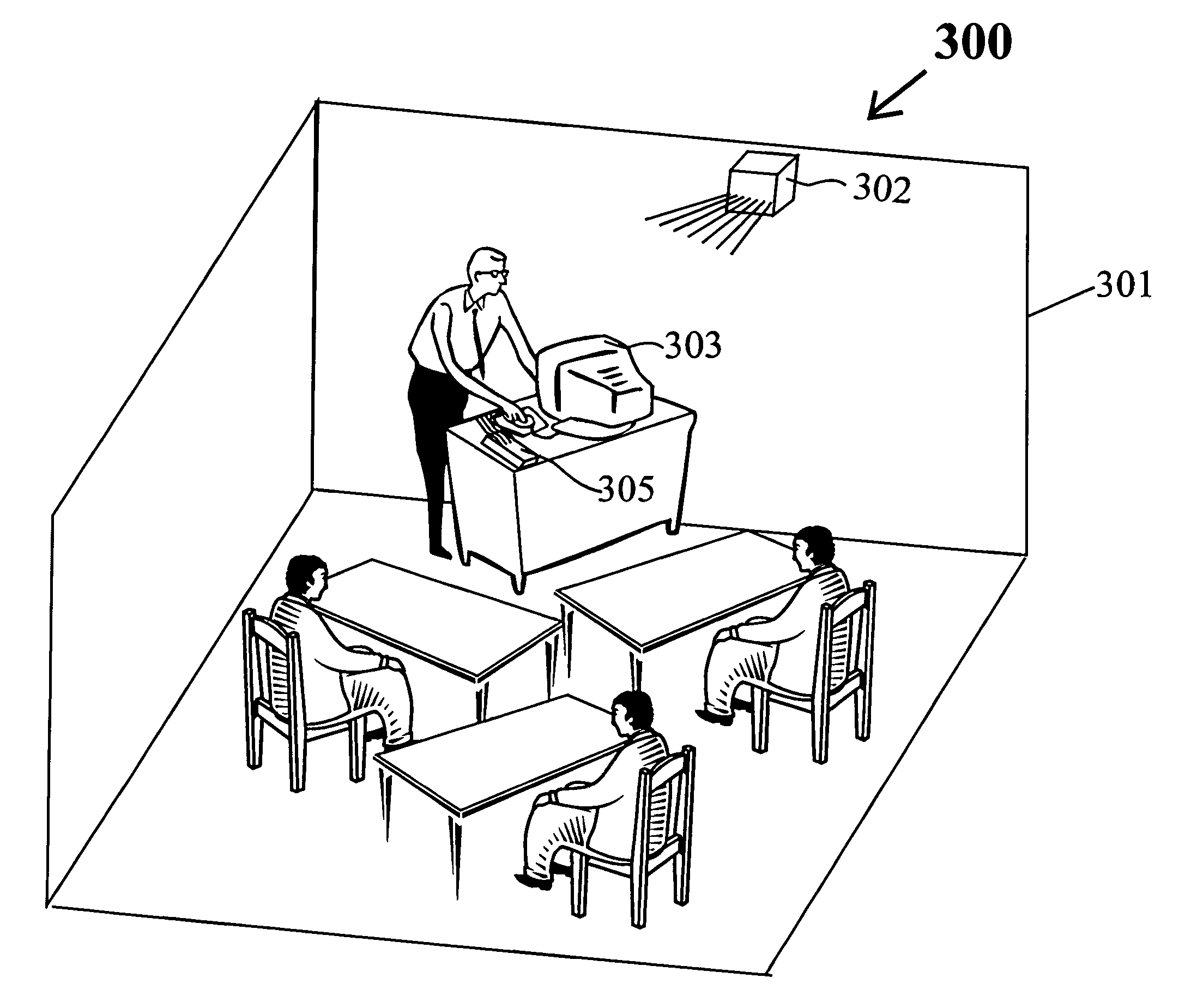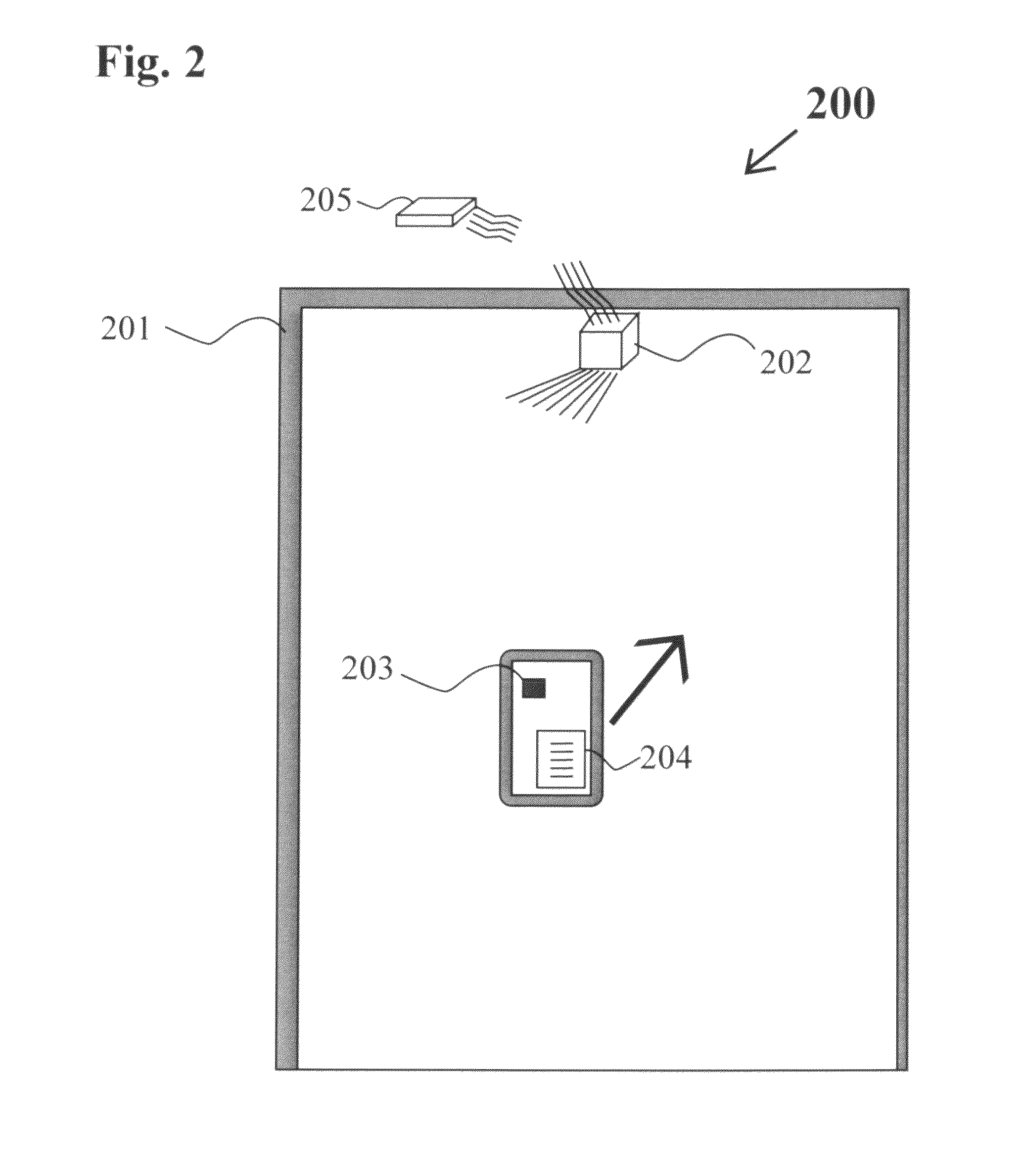Learning guard system
a technology of learning guards and guards, applied in the field of learning guard systems, can solve the problems of not specifically addressing disclosures, mechanisms that do not stop the functionality of smart phones, certain mobile device functions and features, etc., and achieve the effect of increasing the ability of students to concentra
- Summary
- Abstract
- Description
- Claims
- Application Information
AI Technical Summary
Benefits of technology
Problems solved by technology
Method used
Image
Examples
Embodiment Construction
[0029]This invention relates to a method and device that blocks smart phone usage and distraction in a school class room environment, enabling the students to pay attention to what is taught in the class room. Significantly, the smart phone s carried by students are required to download an ‘app’ and sign up with the student's name, and create an emergency contact list. This student data is stored in the internal memory of the smart phone, and a copy of it is maintained at the Learning Guard web based database. The smart phone ‘app’ disables smart phone functionalities, including voice communication, text communication, playing music files or video files and web searches. Phone calls from emergency contacts include public emergency notifications as well of list of contacts created by the student at sign up time. The student may revise the contact list for allowed phone calls by signing into the Learning Guard website. When the student enters the classroom, the smart phone ‘app’ commu...
PUM
 Login to View More
Login to View More Abstract
Description
Claims
Application Information
 Login to View More
Login to View More - R&D
- Intellectual Property
- Life Sciences
- Materials
- Tech Scout
- Unparalleled Data Quality
- Higher Quality Content
- 60% Fewer Hallucinations
Browse by: Latest US Patents, China's latest patents, Technical Efficacy Thesaurus, Application Domain, Technology Topic, Popular Technical Reports.
© 2025 PatSnap. All rights reserved.Legal|Privacy policy|Modern Slavery Act Transparency Statement|Sitemap|About US| Contact US: help@patsnap.com



